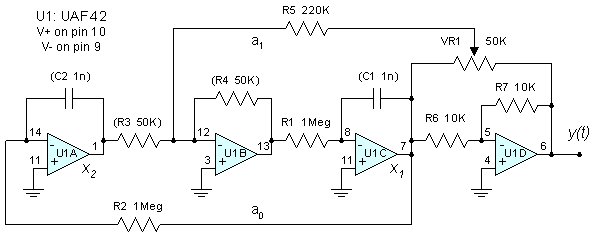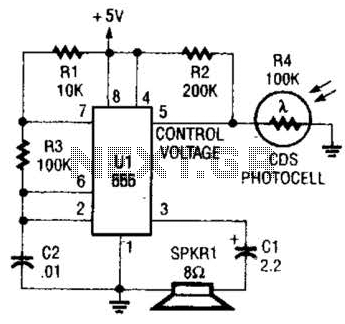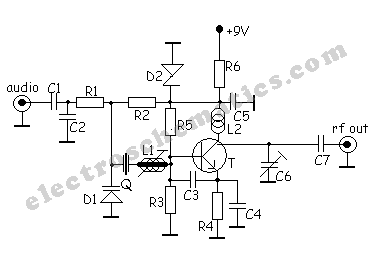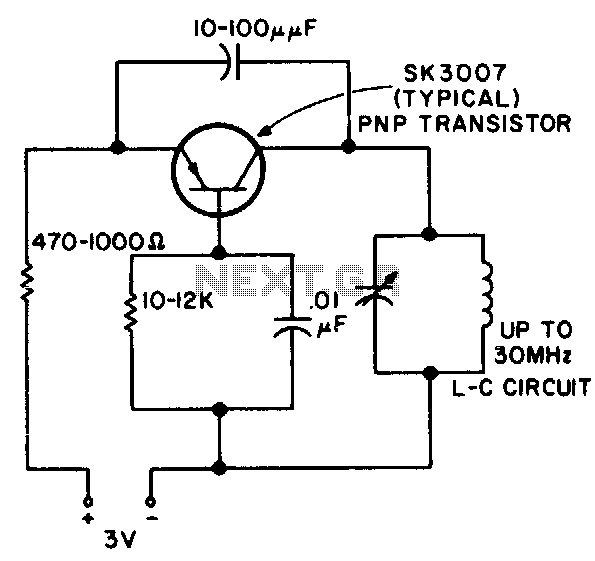
100Mhz Overtone Oscillator
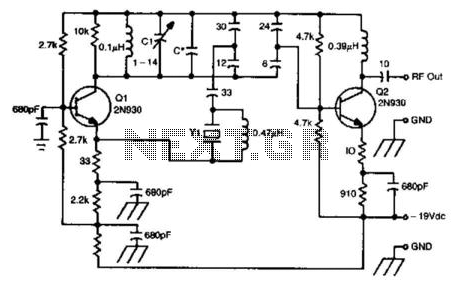
This oscillator circuit utilizes a 5th overtone crystal operating within the 85 to 106 MHz frequency range. The component Y1 represents the crystal. The circuit was initially designed for frequency control in a microwave oscillator.
The oscillator circuit leveraging a 5th overtone crystal operates by utilizing the crystal's natural resonant frequency to generate stable oscillations. The 5th overtone refers to the fifth harmonic of the fundamental frequency, which provides improved frequency stability and selectivity compared to lower overtone crystals.
In this design, the crystal (Y1) is connected within a feedback loop that allows it to sustain oscillations at its resonant frequency. The circuit typically includes active components such as transistors or operational amplifiers, which amplify the oscillations generated by the crystal. Additional passive components like resistors and capacitors are used to shape the frequency response and stabilize the circuit.
The oscillator circuit's application in microwave frequency control is significant, as it ensures precise frequency generation necessary for various microwave devices, including RF transmitters and receivers. The stability provided by the 5th overtone crystal is critical in maintaining performance standards in communication systems and other electronic applications where frequency accuracy is paramount.
The design may also incorporate tuning elements to allow slight adjustments to the output frequency, accommodating for variations in component tolerances or environmental factors. Overall, this oscillator circuit exemplifies the integration of crystal technology in high-frequency applications, ensuring reliable operation within the specified frequency range. This oscillator circuit uses a 5th overtone crystal in the 85-to-106 MHz range. Y1 is the crystal. The circuit was originally used to frequency control a microwave oscillator. 🔗 External reference
The oscillator circuit leveraging a 5th overtone crystal operates by utilizing the crystal's natural resonant frequency to generate stable oscillations. The 5th overtone refers to the fifth harmonic of the fundamental frequency, which provides improved frequency stability and selectivity compared to lower overtone crystals.
In this design, the crystal (Y1) is connected within a feedback loop that allows it to sustain oscillations at its resonant frequency. The circuit typically includes active components such as transistors or operational amplifiers, which amplify the oscillations generated by the crystal. Additional passive components like resistors and capacitors are used to shape the frequency response and stabilize the circuit.
The oscillator circuit's application in microwave frequency control is significant, as it ensures precise frequency generation necessary for various microwave devices, including RF transmitters and receivers. The stability provided by the 5th overtone crystal is critical in maintaining performance standards in communication systems and other electronic applications where frequency accuracy is paramount.
The design may also incorporate tuning elements to allow slight adjustments to the output frequency, accommodating for variations in component tolerances or environmental factors. Overall, this oscillator circuit exemplifies the integration of crystal technology in high-frequency applications, ensuring reliable operation within the specified frequency range. This oscillator circuit uses a 5th overtone crystal in the 85-to-106 MHz range. Y1 is the crystal. The circuit was originally used to frequency control a microwave oscillator. 🔗 External reference
Warning: include(partials/cookie-banner.php): Failed to open stream: Permission denied in /var/www/html/nextgr/view-circuit.php on line 713
Warning: include(): Failed opening 'partials/cookie-banner.php' for inclusion (include_path='.:/usr/share/php') in /var/www/html/nextgr/view-circuit.php on line 713
